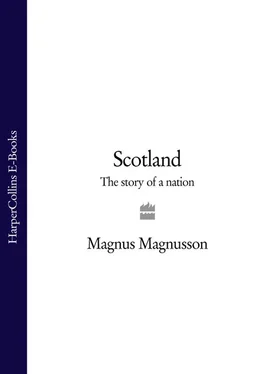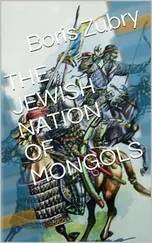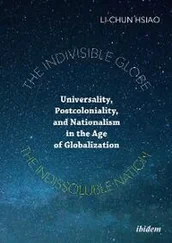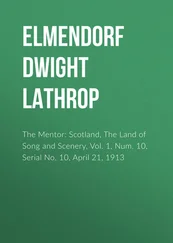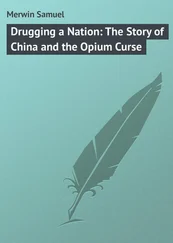The major impact of the Church was the introduction of writing, and the close and mutually beneficial relations between Church and state. The Church was both client and patron of the monarchy. Columba himself ordained one of the kings of Dalriada (Áedán mac Gabhráin) on Iona in 574. Another graphic impact was on Pictish art: following the advent of Christianity the Pictish symbol-stones were shaped into slabs with a dominant cross carved on one face, and Biblical figures like David were introduced to symbolise kingship, alongside the characteristic ornamentation of spirals, snakes, dragons, birds and fish.
Although both the Picti and the Scoti were ethnic Celts, the Picts were not the same kind of Celts as those incomers who came from Ireland around 500 to found the kingdom of Dalriada. The language the Picts spoke was ‘British’ or ‘Brittonic’ Celtic, akin to Welsh, Cornish and Breton (scholars call it ‘P-Celtic’), whereas modern Irish and Scottish Gaelic descend from Goidelic Gaelic (which is classified as ‘Q-Celtic’). The eventual assimilation of the Picts into the Gaelic culture of the Scots was made much easier through the influence of Christianity. Having been converted by Columban missionaries, the Picts looked to Iona as the head of their Church. Differences between Picts and Gaels began to be reduced, through intermarriage and the exchange of church personnel. So it is reasonable to assume that it was the rise of the Gaelic Church in Pictland which laid the foundations for the ultimate unification of the Picts and Scots as a new kingdom.
But before that could come about, there was another threat to be faced, in the shape of an enemy who would serve to bring the Picts and the Scots even closer together – the vikings.
The vikings have long been considered the bogeymen of history. For centuries they were cast in the role of Anti-Christ – merciless barbarians from Scandinavia who plundered and burned their way across the known world, heedless of their own lives or the lives of others, intent only on destruction and rape and pillage. In fact it was never quite as one-sided as that – history seldom is – but it made a good story at the time. Today there is emerging a much more balanced version of the story which depicts the vikings in a less lurid and more objective light. It is mainly a matter of emphasis: less on the raiding, more on the trading; less on the piracy and pillage, more on the poetry and artistry; less on the terror, more on the technology of the Norsemen and the positive effect they had.
Politically as well as militarily they had a profound effect on the shifting, unstable kingdoms which were developing in what was to become Scotland. The historical record of their incursions into Scottish waters and territory began in 795 with a raid on Iona (the first of three such raids in ten years), and Scotland was then engulfed in the turmoil of what has come to be called the Viking Age (800–1050). While Danish raiders attacked the Continent and southern England, Norwegian invaders established a Norse earldom in Shetland and Orkney which was to last for more than three hundred years, from the middle of the ninth century to the thirteenth.
The Orkney earldom was a semi-autonomous fiefdom of the Norwegian crown, theoretically a Norwegian possession but frequently a recalcitrant one which displayed a large degree of independence. The main source for our knowledge of the Northern Isles during this period is an Icelandic saga, Orkneyinga Saga (‘The Saga of the Earls of Orkney’), written early in the thirteenth century. It is a sprawling, dynastic chronicle of the lives of the earls of Orkney, a vivid narrative pageant of clashing personalities and dramatic events – not so much a history as a historical novel. It is the only medieval chronicle which has Orkney as the central place of action, but the story has much to say about the Norse impact on the northernmost counties of mainland Scotland, Caithness and Sutherland (which to the Orcadian Norsemen was ‘South-land’!).
Today the people of Shetland celebrate their Norse heritage on the last Tuesday of every January with an exhilarating, night-long viking fire-festival called Up-Helly-Aa, which culminates in the ceremonial burning of a viking galley in Lerwick, the capital town of Shetland. It is not an ancient ritual by any means. It was invented by a blind Shetland poet in the 1880s, an aspect of the Victorian ‘rediscovery’ of the Viking Age by literary figures like Thomas Carlyle and William Morris – and, before them, Sir Walter Scott with his novel The Pirate (1821), which was inspired by a fleeting visit to Shetland in 1814 and a glimpse of the ruined medieval baronial building at Sumburgh which he named, romantically, Jarlshof (‘Earl’s Temple’).
From their base in the Northern Isles the Norsemen ruled a miniature empire of the North Sea. It was probably from Orkney that their early raids on Iona were mounted; it was from Orkney that they exercised dominion over the Western Isles, which from then on owed fealty to the Norwegian crown. Viking armies penetrated deep into mainland Scotland in the north and the west, inflicting heavy defeats on the Scoti and the Picts alike. On the west coast, in 870, the vikings stormed the Strathclyde fortress of Dumbarton after a four-month siege; on the east coast in 890 they captured the formidable Pictish fortress of Dunnottar on its apparently impregnable rock projecting from the coast three kilometres south of Stonehaven. Norse power played a potent part in the kaleidoscope of aggression and alliance from which the picture of Scotland was to emerge.
Kenneth mac Alpin (800–58): the union of the Picts and the Scots
One effect of the viking incursions in the west was to force the Scots of Dalriada to look eastwards along Strathearn (‘the Strath of the Irish’) towards the richer lands of Pictish Fortriu, where the Picts, too, were under fierce pressure from viking attacks from the east. The power of Dalriada was now in decline and, despite occasional hostility between Scots and Picts, there was a certain inevitability about the way in which the two kingdoms began to come together against the common viking enemy.
This process of gradual unification culminated in the middle of the ninth century with the first joint king of the Picts of Fortriu and the Scots of Dalriada – Kenneth mac Alpin (Cináed mac Aílpín), known as Kenneth I. He was born about 800, and is believed to have been of mixed Dalriadan and Pictish stock, with a Gaelic father and a Pictish mother.
Out of the welter of warfare which saw the royal families of both kingdoms crushed, Kenneth mac Alpin emerged as king of Dalriada around 840; a few years later he became king of Pictish Fortriu as well. How exactly that came about is not known; according to a lurid folk-tale he invited the leaders of the Pictish nobility to a feast under a flag of truce and had them all slaughtered, but that yarn is no longer given any credence.
Kenneth mac Alpin soon moved his base out of Dalriada and eastward to Tayside, the heartland of Pictland itself. The island of Iona, founding centre of the Columban Church, had proved to be too vulnerable to viking raids; so when another huge viking fleet came prowling down the west coast in 849 on its way to Ireland, Iona and the other ‘hallowed’ islands were abandoned and the relics of their saints taken to safety on the mainland. The bones and treasures of St Columba were carried from Iona to Dunkeld (‘Fort of the Caledonians’), and installed in a great new church there.
It was the end of Dalriada as a historical identity. Kenneth mac Alpin, or one of his successors, established a new royal seat at Scone, near Perth, which became the capital of a united kingdom. He died in his palace at Forteviot in 858, having in the last ten years of his life invaded the kingdom of Northumbria no fewer than six times. In the course of these incursions he burned the royal fortress of Dunbar and the great early monastery at Melrose.
Читать дальше
